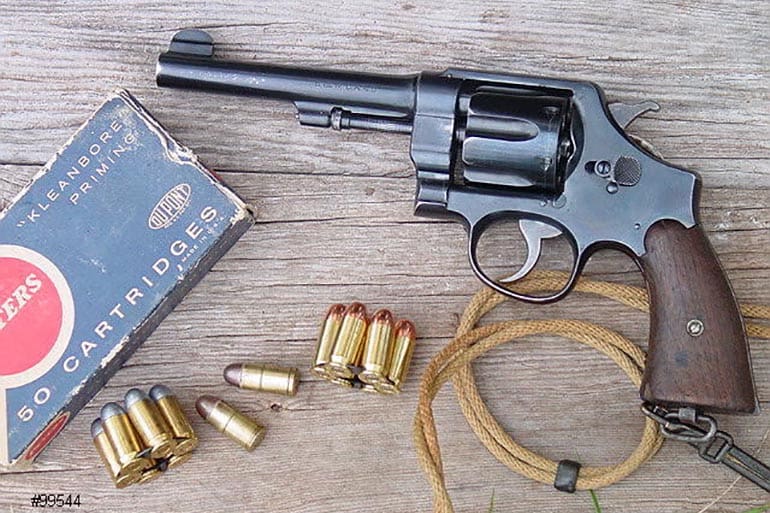
By Ben Jimenez
If you grew up reading gun magazines in the 1980s (yes, print media was the only option then), you were frequently bombarded with monthly topics like “9mm vs. .45,” “Rubber vs. Wood Grips,” or the hotly contested “Revolver vs. Semi-auto.”
GLOCK had just released the G17 and some in Congress began speechifying about “undetectable pistols” getting through airport security. The U.S. military had just retired the classic 1911A1 pistol and replaced it with an Italian 9mm “mouse gun.” People were hyperventilating as the sacred cows of the gun world were slain one at a time.
Police departments across the nation began issuing semi-auto pistols, firearms ranging from Beretta 92’s to GLOCK 17’s. Smith & Wesson semi-autos were popular choices, but every cop and handgun-shooting civilian knew how to run a revolver and probably owned one or more.
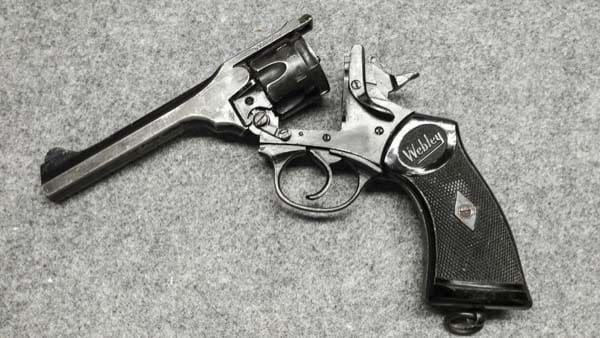
Flash forward to the 21st century when virtually every police department in the country issues some sort of semi-auto pistol to their officers. The NYPD, who had allowed officers of a certain tenure to keep their .38 Specials, finally retired those officers and their guns in 2018, ending over 120 years of the .38 wheel gun on patrol in the five boroughs.
Many law enforcement officers get their only firearms training through whichever academy is attached to their organization, and that academy only teaches new recruits how to use the firearms their department issues. This maximizes the resources that the academy has and ensures that the freshly minted rookies will be highly qualified with whichever model auto pistol, shotgun or rifle they are issued.
The downside to this is that we now have generations of police patrolling the streets who have never held a revolver and have no idea how to operate one. They often don’t know how to open the cylinder to clear the gun if they run across one in the wild or even check to see if it’s loaded or not.
This problem isn’t limited to police professionals. The pool of civilians capable of training others to use revolvers has dwindled to where it’s becoming a specialized skill that is taught by a handful of instruction sources. Our collective knowledge base has been boiled down to operating a high capacity, polymer framed striker-fired pistol.
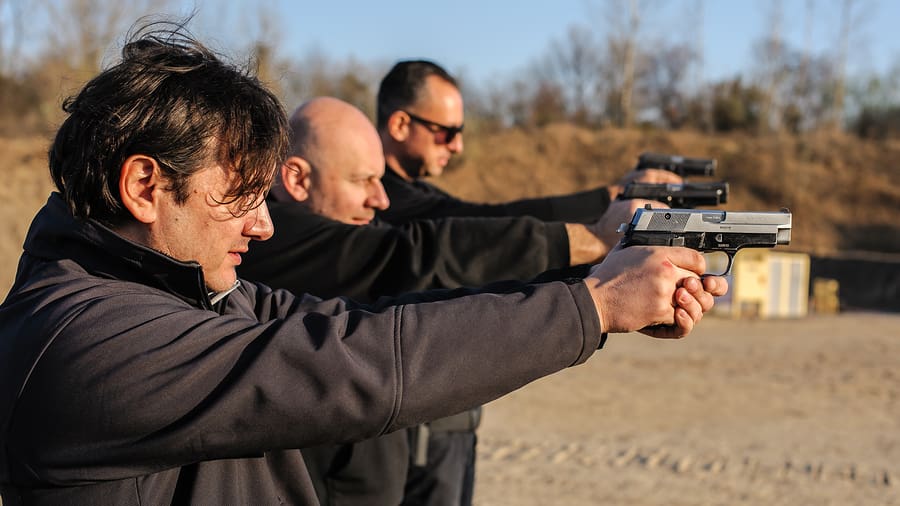
And the issue isn’t limited to revolvers. If you’re an armed professional or a civilian who carries a handgun for personal defense, you need to know how to run the majority of the guns you might run across.
Why? Because you may find yourself having to use the gun you wrestled out of the hand of an assailant. Or use one that’s handed to you by a neighbor. Or you may need to clear a gun on a scene, or in an attic or garage.
If you have prepared yourself in the ways of armed self-defense, you need to know how to utilize the tools at hand, even if they’re not the most modern or ideal. A 100-year-old gun with one round in it can still kill you as dead as one that rolled off the assembly line yesterday.
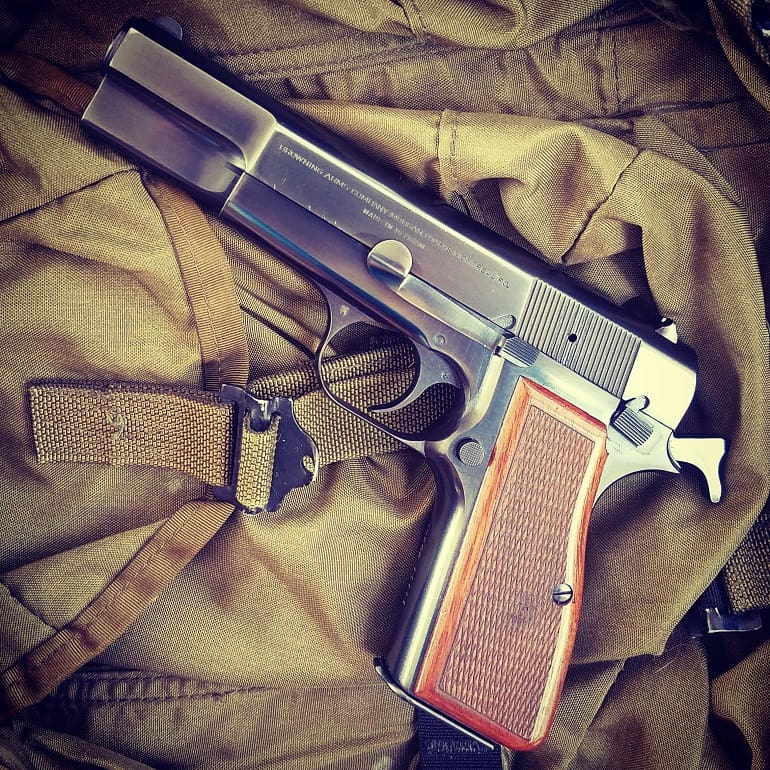
What types of pistols might you encounter? Depending on where you live, it may be a single action revolver, a double action revolver or a break top revolver. It might be a steel-framed, single action 1911 in .45ACP or a Browning High Power in 9mm.

It could be a High Standard Derringer in .22 Magnum or a Bond Arms in .45LC. These are sometimes found with “wallet holsters” meant to disguise the gun and are only legal for law enforcement after the ATF reclassified any gun equipped with one.
You might need to run a Smith & Wesson DA/SA Model 59 or a Beretta 92/M9. Do you know where the safety/de-cocker is? Which direction means “fire?” (On a DA/SA with slide mounted safety, point the safety in the direction you want the bullets to go–forward = out the front, down = stay in the gun).
It could be a European version of a gun you’re familiar with but it has a heel-type magazine release.
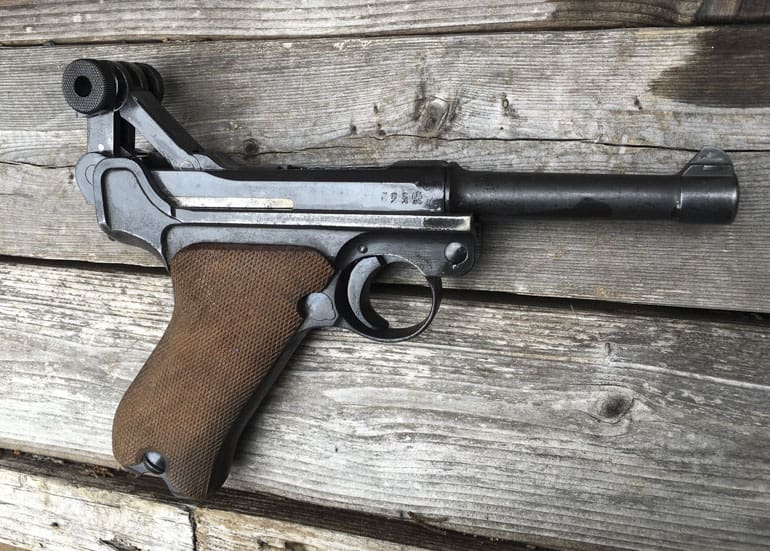
Going through grandpa’s old trunk? Is that a German Luger in there? Did he bring back a Broomhandle Mauser C-95? Can you tell if it’s loaded or not without pulling the trigger?

Did your partner just hand you her backup Smith J-frame .38 with a spare speed strip when you dropped your GLOCK down the sewer grate or you ran out of ammo? What the heck do you do with that?
What if you just saw a cop get shot and the perpetrator took their gun. Do you know where to check them for a backup weapon? An ankle holster, vest holster, pocket holster or IWB holster could contain the gun you need in that situation. Would you know how to run what you find? A J-frame or a Walther PPK?
There are resources to help you gain the knowledge you need. The National Rifle Association is the nation’s leading resource for firearms training. They have a number of classes that can expose you to a variety of firearm types.
If you are “on the job,” see if your department has a firearms unit or shooting team. These frequently attract the firearm experts in an organization who would be more than happy to share their knowledge. Also, try your local gun shop, especially if you are considering the purchase of a concealed carry or backup gun.
Until recently, Youtube.com had been an outstanding source of obscure firearm information. While they are in the process of running off anything firearms-related, you can still find videos on the internet that can introduce you to the world of metal guns. The Military Arms Channel and Forgotten Weapons can show some really obscure designs, but also cover items that you may run into on the street.
Whether your job is patrolling Chinatown or making sure your kids make it to the bus stop safely, if you carry a gun, you should also arm yourself with the knowledge to operate any gun that may come within your sphere of influence. If you need it to shoot or you need it to not shoot, it’s a safety issue that could mean life and death for you or a loved one.


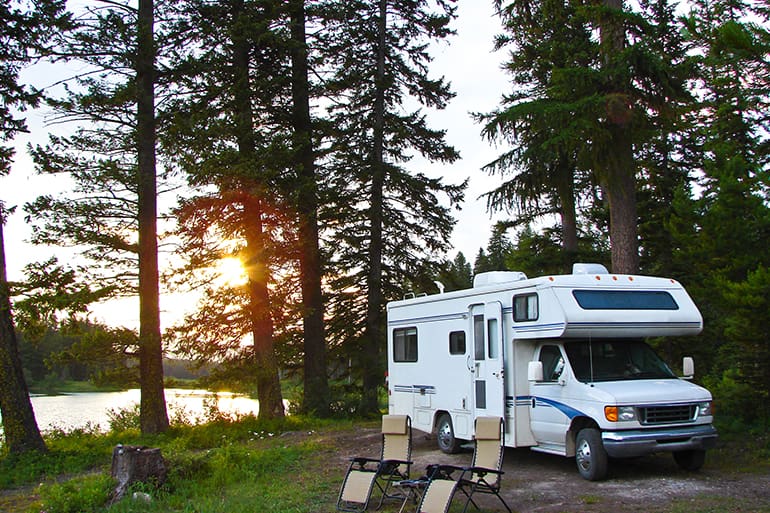

When I taught CCW classes I had my students fire every action type out there. Within reason. I provided the handguns. DA, SA, DAO, DA/SA, striker fired, revolver and auto. Even included a P7M8 to make it interesting.
I do the same thing. I think it’s important, and the students seem fascinated.
I’d go one step farther and say that anyone with more than a passing interest in firearms and self defense owes it to themselves to buy a revolver and decide for themselves which type better suits their needs. You might find you like having the option of pulling back the hammer and taking advantage of the inherent accuracy a 2-1/2 pound trigger facilitates, or not having to worry about pushing the slide out of battery when some punk has you flat on your back and is bashing your head on the sidewalk. Even with cops, the vast majority never fire their weapons in anger and 18 round mag dumps are never necessary (unless perhaps you can’t hit the broad side of a barn), so you might decide that the primary drawback to revolvers is outweighed by their advantages. You’ll never know unless you try one out.
“18 round mag dumps are never necessary” Bullshit.
“(unless perhaps you can’t hit the broad side of a barn)” – which applies to most people under stress. A study in New York showed cops hit what they’re aiming at only 25 percent of the time. The only reason there are any living cops in New York is that criminals hit what they’re aiming at only 11 percent of the time.
I’d make an exception for the NYPD with their 12# Glock triggers. The criminals’ marksmanship would greatly improve if they figured out that the sights work much better when holding the pistol upright.
Several years ago I read an article by Mas Ayoob where he cited a study that asked cops involved in shootings how many rounds they fired. It was common for them to answer 3 or 4 when they actually dumped the whole mag. I’d wager that in every case 3 or 4 rounds would have been sufficient.
Richard Steven Hack,
As Governor Le Petomane mentioned, historical New York City Police Department accuracy is unusually awful because they have hellacious (ridiculously heavy) non-standard triggers on their semi-auto duty firearms.
Yep, everyone that enjoys firearms should buy or at least shoot a good revolver. My 686 trigger is miles ahead of any semi auto that I’ve every shot (1911s included). There’s also just a certain satisfaction that comes from firing a revolver. However, for a regular carry, I’d always go with a semi auto simply for capacity. Heading into bear country, I’d swap that out for a 44 mag. Different guns for different situations.
After a reduced power spring kit (hammer spring and trigger return spring) my GP100 lights up with 9lbs of trigger pull in DA and 2-1/2lbs in SA. The DA smoothed up nicely with use. I have a Beretta 92 compact with a reduced power hammer spring that only requires 8-1/2lbs in DA, but you’d swear the GP is significantly lighter.
I normally carry the GP but occasionally carry the Beretta. Each has it’s advantages depending on the situation. I figure the 158gr. Double Taps are each worth at least two 9mm slugs.
Gotta say, the reason I know how to shoot a revolver is so I can get one of those tapered barrel Smiths. Such a classy gun that hearkens back to a different time.
An elegant weapon for a more civilized age.
On some European pistols, notably French ones, the safety levers operate in the opposite direction to what is normal.
Jane’s Gun book also had the safety and clearance instructions for the guns in the book.
revolvers? i am most fond of single action.
but all i saw was a hipower.
“Our collective knowledge base has been boiled down to operating a high capacity, polymer framed striker-fired pistol.”
I’d disagree. But those of you who probably wouldn’t even own a gun except for the martial arts consideration tend to ignore everyone of your elders.
It’s not that hard to ignore them when a significant number of elders still seem to wish the last half century never happened and that owning anything more advanced than a bolt action rifle or 1911 is meant to replace shooting skill with “spray and pray” shooting.
They also seem to be the same group of folks that think shooting someone with a half dozen rounds of 9mm or 5.56 will only piss someone off while a single round of .45 ACP or .30-06 will guarantee someone’s death every time you pull the trigger.
I’d contend that there’s nothing ‘advanced’ about a Glock or AR-15 that didn’t exist 100 years ago other than the materials they use. Plastics have come a long way in that time though.
As far as ‘spray and pray’ goes, that simply isn’t an option with a (for example) 5 shot .38 special. Sure, not everyone who carries 17+1 is going to revert to that tactic in a panic situation, but it does facilitate that mentality. I’d much rather face off against a spray and prayer than someone who could keep his cool and make one well placed shot with a .357 magnum (or .30-06).
I would heartily disagree with the idea that it is not possible to “spray and pray” with a 5-shot revolver. The mentality comes from being unable to utilize basic firearms skills in the face of fear and adrenaline, something that is unaffected by the choice of firearm you select. The only noticeable difference is that the 5-shot .38 is going to be empty much faster than the 17-shot semi-automatic when the user “sprays and prays” it away. If anything, I could even argue the likes of a 5-shot .38 is easier to “spray and pray” with, given the propensity for newer shooters to jerk the trigger on such handguns due to having a heavier and longer trigger pull compared to most semi-automatic handguns.
I also sincerely believe many who think they will keep their cool and end the threat in “one well placed shot” have likely never been in a violent situation in their lifetime. Any violent encounter, regardless of if a firearm is used or not, is usually a short, messy affair that oftentimes occurs in the heat of the moment, where keeping a cool head is the exception instead of the norm, and as shown through data for multiple decades, most gunfights where a threat is incapacitated required 2-4 hits on the target for successful incapacitation, with even the likes of centerfire rifles and shotguns requiring a second hit to incapacitate a target regularly.
Jeffrey,
paragraph 1; If we’re talking about newbies or people who refuse to train I really don’t think it matters what you’re shooting, if you’re more than 3 feet away from your assailant I think you’re likely to be as much of a threat to innocent bystanders as you are to your assailant. However, it only takes a modicum of practice to be proficient enough with a DA trigger pull to safely place all your shots on center mass at 7-10 yards, significantly longer than the vast majority of self defense shootings. If you want to buy a weapon just to stick it in your dresser drawer and forget about it, neither a semi-auto nor a revolver will serve you well.
paragraph 2; As the Mighty Mighty Bosstones once said, ‘I’m not a coward, I’ve just never been tested.’ We find out if and when we find out. The drill with revolvers is 2 or 3 shots on target, then pause (very briefly) to assess the situation. And in a short messy affair there’s a better chance of getting those 2 or 3 shots off without a hitch than with a semi-auto. As far as how many shots a gunfight requires, that is impossible to know, only how many shots are actually fired can be assessed. If I do a mag dump, how do I know if it was the 2nd or 14th shot that incapacitated my assailant? The vast majority of defensive stops are psychological stops and not actually unconsciousness. 95% of the time a .22LR is just as good as a .44 magnum. What are the odds that you’ll have a free hand and the presence of mind to push the slide forward after you push it out of battery while someone is beating (or stabbing) the piss out of you? You’re initial reaction will be to keep pulling the trigger over and over. Even if you have a misfire the revolver will go bang on the second round, about a quarter second after your first attempt failed and about 10 seconds before you get your head straight and push the slide back into battery on a semi-auto.
Lots of scenarios. In some you die with a revolver and in some you die with a semi-auto. Take your pick and your chances.
“What if you just saw a cop get shot and the perpetrator took their gun.”
If you or someone close to you isn’t in immediate danger, don’t search a dead cop for his “backup gun” that most cops don’t carry, and go running after the guy who just shot said cop.
You won’t look like Rambo, you’ll look just like a guy who stole a gun from a cop and is running away.
At the same time people claim they’ll “never need more than three shots” (based on irrelevant statistics), the author is suggesting to people who will probably never draw their firearm in anger (including most cops) that they need to know how to use someone’s off-brand pistol. Hell, why not include flintlocks, then? Or .50 caliber machine guns – never know when you might run into those! RPGs, anyone?
I see this article as one more lame attempt to convince people that five- and six-shot revolvers are acceptable for concealed carry. Sorry – they are not. There’s a reason the NYPD dumped .38 Specials and a reason the same department created the “New York Reload” method.
Bullshit.
Gov:
Yup.
I watched an officer try and unload the 1911 I had after being pulled over for tag light.
He muzzled me and my son several times while trying to unload the chambered round. He did not know it had a thumb safety. After a few attempts he looked at me and said, ” Is this gunm broke?”
No you have to take the safety off, do you want me to unload it for you? ” No”, then he put the pistul back under the seat told me “get that tag light fixed.”
I was a potential cop killer who needed a disarmed gunm until he couldn’t unload it?
Weird and sad. The one cop that I accidentally showed my permit to as I was retrieving my license from my wallet asked me if I had my piece on me. I said yes, and that was the end of that.
“we now have generations of police patrolling the streets who have never held a revolver and have no idea how to operate one.”
Based on their lack of marksmanship, they can’t operate their Glocks either.
Do you all cook? How do you use a toaster without hurting yourselves.
Olga:
There are a lot of folks who can’t cook worth a damn, but know how to use a toaster without hurting themselves. Because I’m an old geezer, I even know how to use one of those antique vertical toasters, without burning my fingers, where you have to open the doors to flip the bread slices over to toast the other side. Toasters aren’t rocket science.
One of my church friends bought a Heritage 22 and brought it a shoot.
As I walked by I noticed he was removing the base pin and dragging out the cylinder to unload it. I asked if I could show him how to load it more easily. I’m not sure whose mind was blown more…..mine or his. I also showed him how to load it safely for carry…..five beans in the wheel.
The next time we shot I took a New Model Blackhawk to show him a modern take. He then sold the Heritage and bought a Wrangler.
Then everyone laughed at my defense carbine … Marlin 1894 in 357……until they shot it. Hard to beat the handiness of lever gun.
I notice people only a few years younger than me have much experience outside Glocks and ARs.
Here are the most important aspects of operating revolvers and semi-automatic handguns:
Keep the muzzle pointed in a safe direction.
Keep your finger off the trigger until you are
on target and ready to fire.
Beyond the above most basic and important aspects of operating handguns, there are a large variety of revolvers AND semi-automatic handguns with significantly varying operating mechanisms. I believe it is foolish to expect people to know how to operate every type of operating mechanism–especially under stress.
Consider revolvers:
Are they single-action or double-action?
How do you load/unload single action?
Which way does the cylinder access thingy move to expose individual chambers?
How do you load/unload double action?
Does the revolver “break open” at the top? How do you release them?
Does the cylinder swing out? Which way do you move the cylinder release?
Do their cylinders spin “clockwise” or “counterclockwise” as you fire them?
Now consider semi-auto handguns:
Are they hammer or striker fired?
Are they single-action only, double action only, or both?
Do they have multi-strike capability?
Do they have a manual safety? A grip safety?
Do they have a slide lock and release?
Do they have a decocker?
If hammer fired, do they have a half-cock “safe” position?
Where is the magazine release? How do you actuate it?
There are far too many ways that a handgun can operate for the general populace to memorize (especially long term for use 20 years later) and be able to operate in a split-second stressful situation. I handle a LOT of different types of handguns and even I would have to take a moment to study a handgun that I have never handled before (or not handled in a long time) before operating it proficiently.
I watch Forgotten Weapons. If there’s a gun I don’t know how to operate, it’s only because Ian hasn’t covered it yet,
“Outlaw Tom Horn escaped from jail and grabbed a Broomhandle Mauser, but surrendered when he couldn’t figure out how to operate it.”
I think I know how operate most semiautos and revolvers (including the Webley, one of which I have), but I’m not sure I’d do much better than Tom Horn with a broom-handle Mauser (C96, NOT C95 by the way), since I’ve never even had an opportunity to handle one.
If you follow the basic rules of gun safety you should be ok.
Point it in a safe direction and don’t pull the trigger.
Comments are closed.